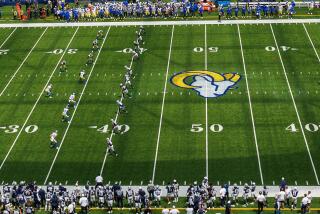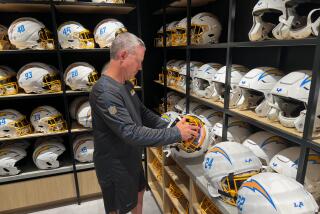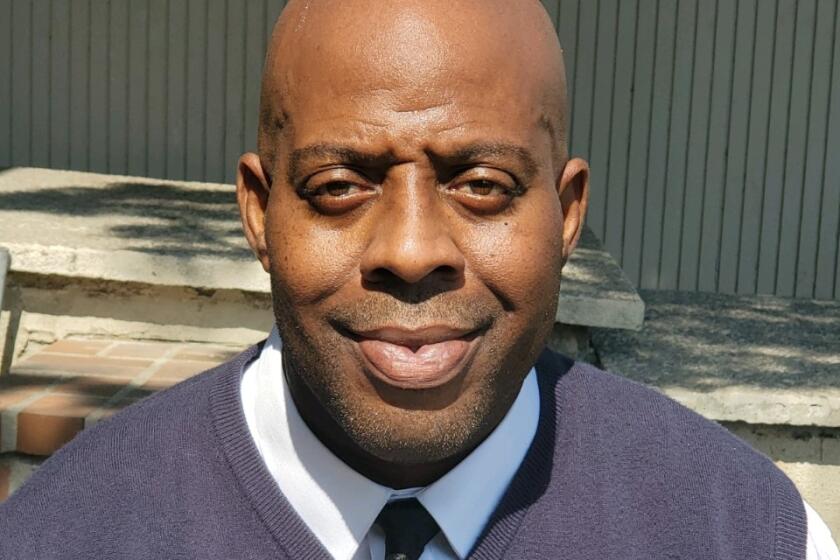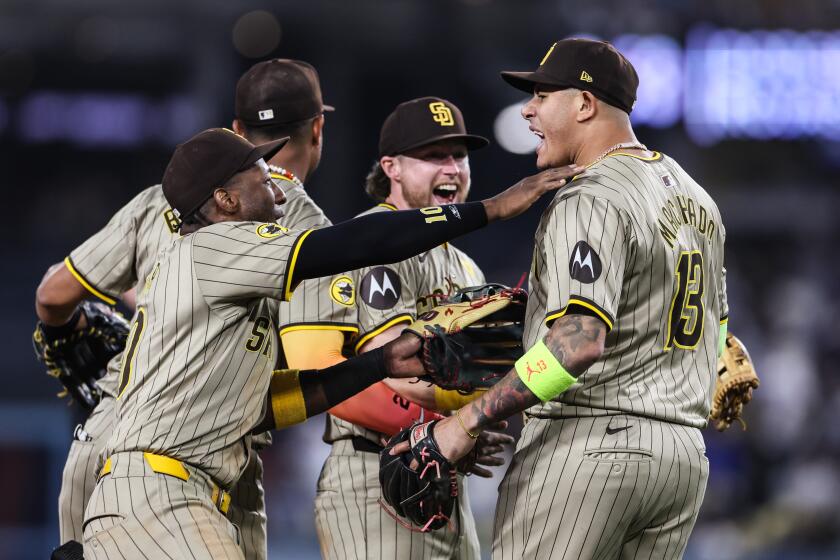Ask Farmer: Why do centers spin the football before they snap it?

Have a question about the NFL? Ask Times NFL writer Sam Farmer, and he will answer as many as he can online and in the Sunday editions of the newspaper throughout the season. Email questions to: sam.farmer@latimes.com
I always notice that centers spin the football before they snap it. Is that to get a better grip? What’s the rhyme or reason to doing that?
Laz Stevens
Glendale
Farmer: Let’s ask Nick Hardwick. He was a Pro Bowl center who played for the San Diego Chargers from 2004 to 2014, snapping for the not-too-shabby trio of Doug Flutie, Drew Brees and Philip Rivers over the course of his career. Like most centers, he would adjust the ball at the line of scrimmage, sometimes spinning it into position. So, Nick, what was the rotation fixation?
Said Hardwick: “Drew and I had a tough time with our quarterback-center exchange when I first got to the league. A lot of theories were thrown out as to why it happened. One of them was I would wear the sticky gloves, and every time I would bring my hand back from delivering the ball, it would grab the ball naturally on its own and pull the ball back away from Drew.
“Then it turned into the gold NFL label on one side of the football where the laces are, which is what you’re trying to get the quarterback. The label might have actually been causing his hand to slip off. That was never confirmed. That was a theory thrown out by our offensive coordinator at the time, Cam Cameron.
“So it became a thing that every time I went up to the ball, I had to put that label in my palm as I was adjusting the football and ensure that I gave him the other side, which is where the air valve was. I did that forever. It got so ingrained in me. I don’t know if it became a superstition thing, or just became a habitual thing. I don’t even know if at one point I was in control of it.”
And the value of doing something the same way over and over and over?
“The further you go along and the more success you have, the more you stick to the routine and the more you build and develop systems, that when things get kind of crazy you always end up coming back to your autopilot.”
::
When the ball changes possession, most noticeably on punts, an official drops a blue flag. For whom is that meant, and when does it happen?
Barry Chess
Westlake Village
Farmer: That might look like a flag, but it’s actually a blue, weighted beanbag. Former NFL referee Mike Carey explains: “That’s generally used to mark where a change of possession is, or the spot of a fumble. So you always have a reference spot in regards to enforcement of a foul, or to bring the ball back if it has to come back for any reason. Unless you mark that on the field, you’re kind of in no man’s land.”
All the officials carry a beanbag, in case there’s a change of possession, a fumble, or a random spot that requires marking. They’re made to be discreet so no one confuses it for a flag being thrown.
More to Read
Go beyond the scoreboard
Get the latest on L.A.'s teams in the daily Sports Report newsletter.
You may occasionally receive promotional content from the Los Angeles Times.











